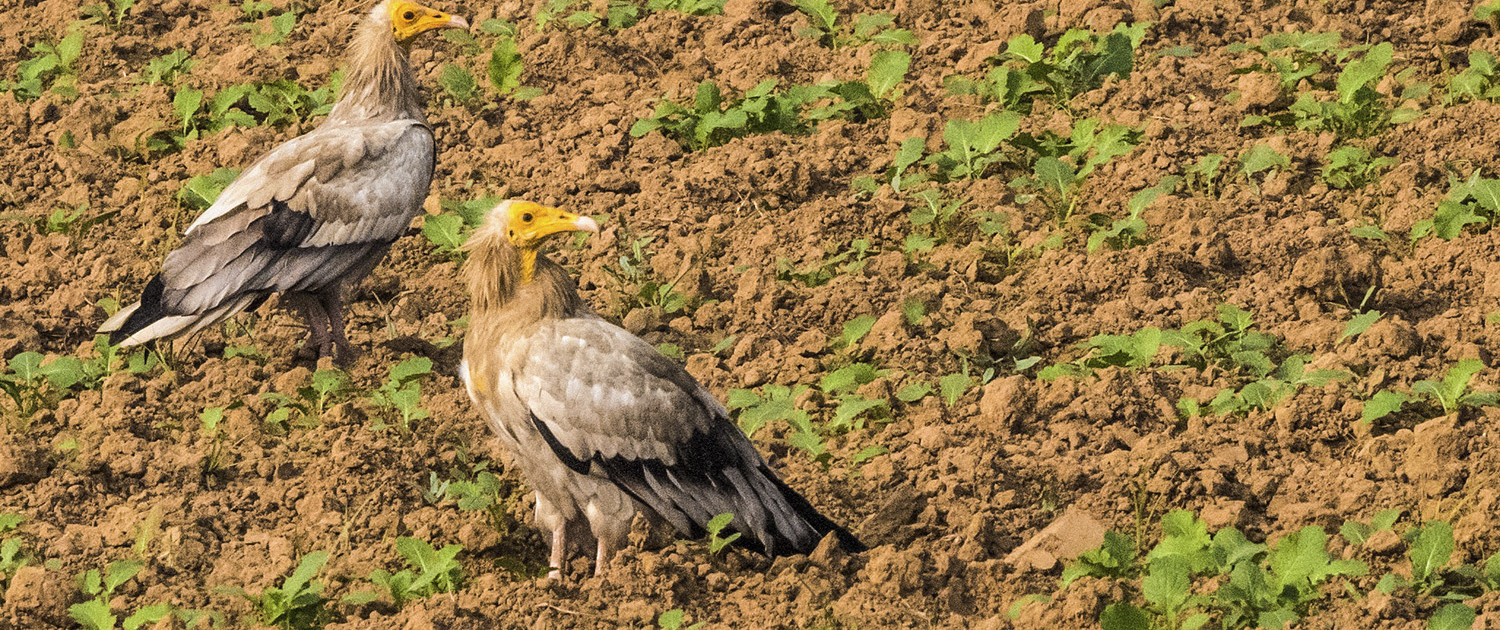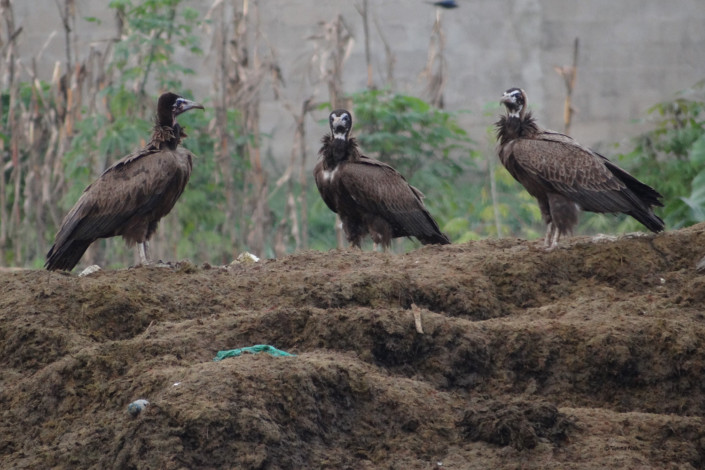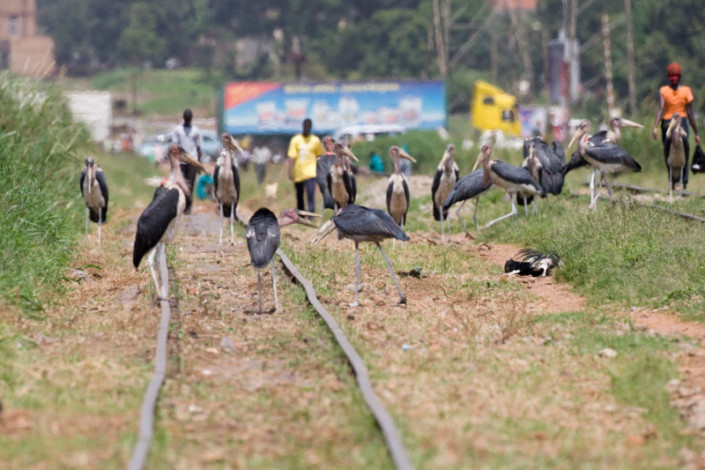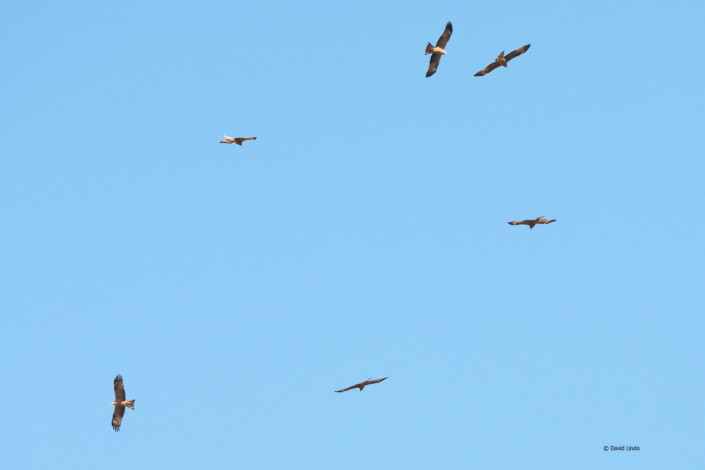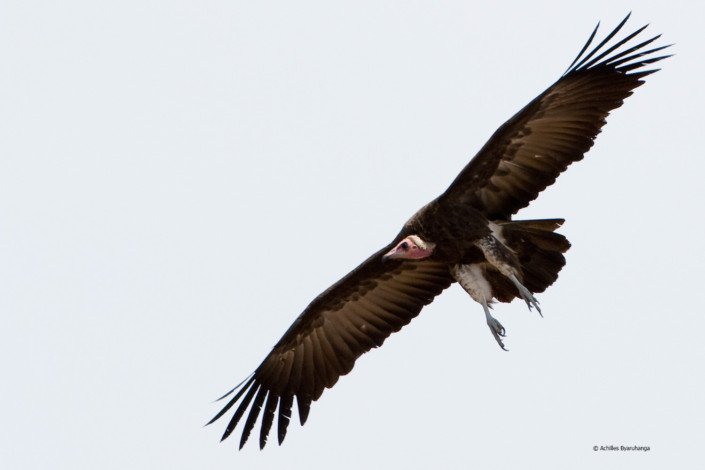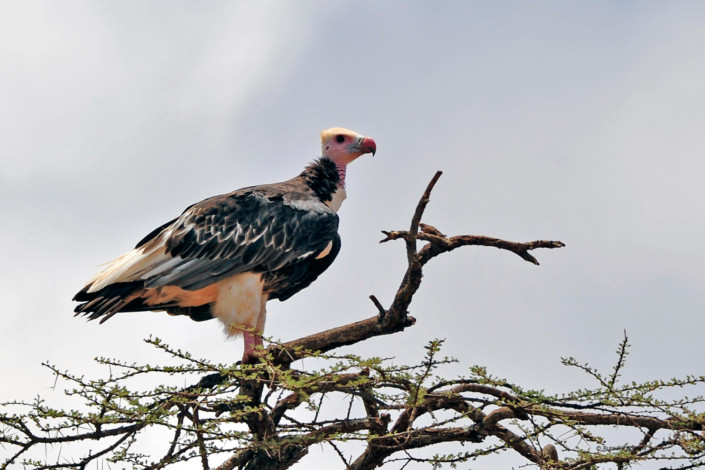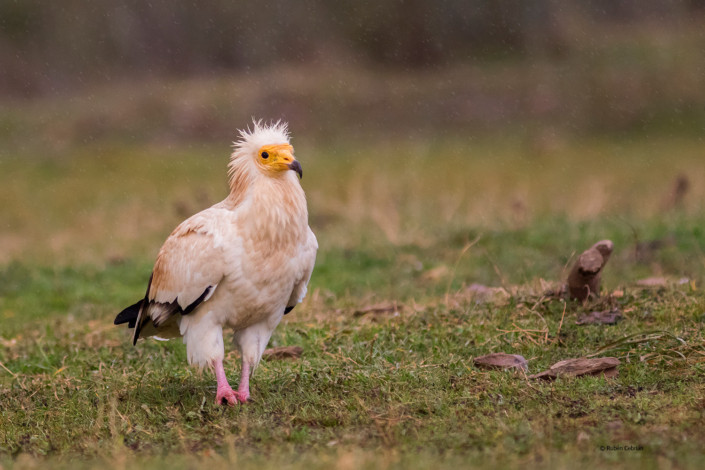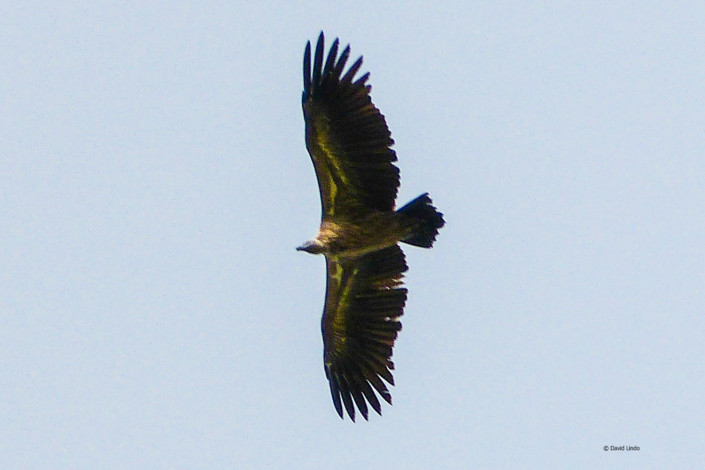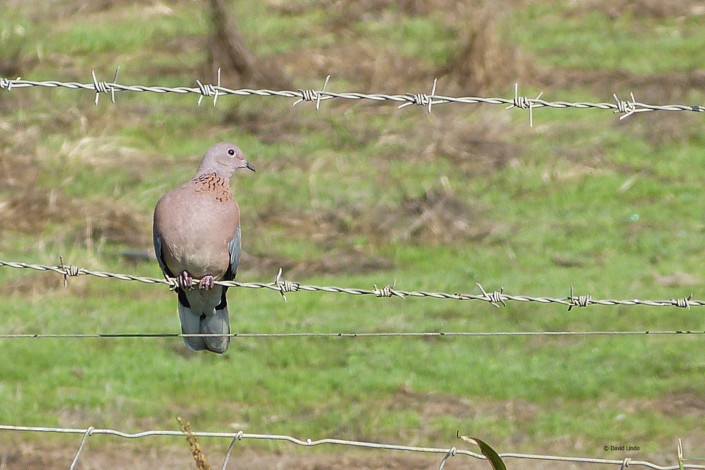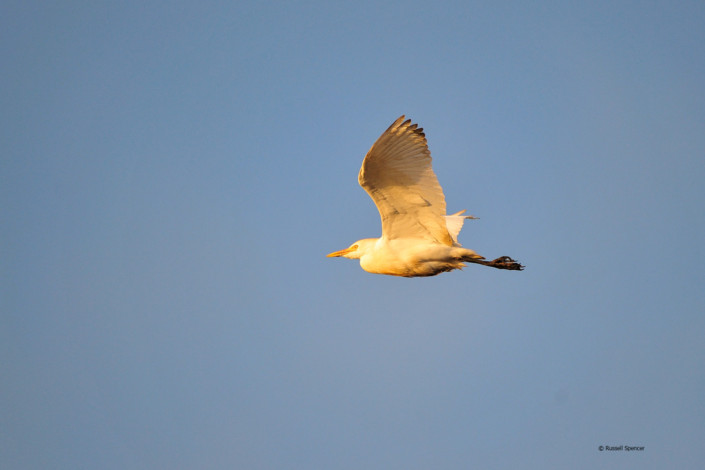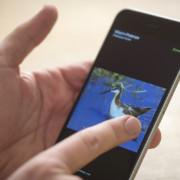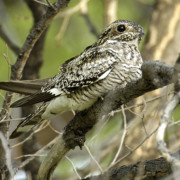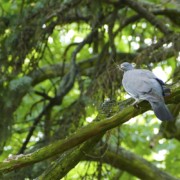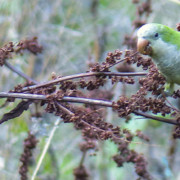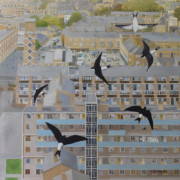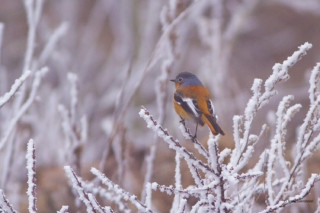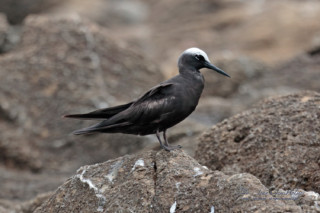Counting vultures in and around Kampala’s abattoirs is one of NatureUganda’s more unusual member activities. It may also disgust you to know: it’s one of my favourites!
On the first Saturday of every September, Nature Uganda undertakes the vulture count to celebrate International Vulture Awareness Day in an effort to educate the general public about the world’s most important avian scavengers. Vultures aren’t the world’s prettiest birds – that characteristic bald head helps to keep it clean when it is plunged deep inside a carcass – but they (and the Marabou Storks) are arguably the most useful. Their disposal of animal carcasses helps maintain the health of our environment.
Vultures are nature’s most successful scavengers, known by some as the “Superman of the bird world”. Vultures can eat Anthrax (without dying) and quickly dispose of diseased carcasses (without catching the disease). And no other animal will eat their carcass!
These birds position at the apex of the food chain makes them acutely vulnerable to poisoning. In the past decade, hundreds of vultures have been accidentally killed across East Africa after consuming poisoned animals put out to kill lions and hyenas that have attacked livestock. Sadly, vultures are also intentionally poisoned by poachers because the presence of circling vultures alerts wildlife authorities to the location of the poachers illegal activities.
Next stop – the abattoir!
Although we jumped into the minibus at the Uganda Museum as strangers, by the end of the vulture count our team of ornithologists and regular NatureUganda members were all swapping phone numbers. Three groups surveyed Kampala’s abattoirs, fish factories and the Kampala City Council dumping site that morning. Visits to these glamorous hangouts were made even more appealing thanks to cold morning drizzle!
Our aim? To record the number of vultures, Marabou Storks, Pied Crows and Black Kites. Each of us had a role to fulfil: to observe, to confirm and to record sightings.
As our matatu minibus taxi drove us through the early morning streets of Kampala, there were shouts of:
“Three Marabou to the left!”
“One Black Kite!”
“Two Pied Crows!”
We counted large numbers of grimy Marabou Storks in the treetops between Makerere University buildings and admired the pretty Speckled Pigeons scavenging amongst the rubbish along the road. The University’s grounds are famous for having a large Marabou Stork population. In fact, it is believed that Kampala itself supports 100,000 of them. The paucity of municipal rubbish collection means there is an ever ready supply of food.
There was an unconfirmed sighting of a Palm Nut Vulture near the golf course. Necks craned out of the minibus window in an effort to get a better look. The tour guide, whom I first met on the International Day of the Safari Guide, pointed out a cisticola species and a Grey-backed Fiscal.
From the golf course, we drove to “meatpackers”, and this is where it got interesting. We watched a Black Kite and a Pied Crow fight over a scrap of meat ripped off a carcass a few hundred metres away. Ahead, a Hooded Vulture flew across the road. A dozen more sat roosting in the palm trees opposite the abattoir itself; we couldn’t wait to jump out of the matatu and start counting them.
By this time it was raining hard. The birders didn’t give up – even with the stink of guts and carcasses emanating from the abattoir.
Forget the stench, focus on the vultures!
The serious count started behind the abattoir, in the area along the railway track. Here in a stretch of open ground men skin, hack and dismember the carcasses of cows. Men and women sit next to the railway line roasting cow hooves over open fires surrounded on all sides by hungry Marabou Storks and vultures.
On the electricity pylon above their heads, we counted 10… 11… no 12 Hooded Vultures. Getting an accurate figure of the huge Marabou was surprisingly difficult too; some would fly off and circle back again just as we thought we had counted them all.
Despite the rain, our three teams recorded a total of 127 Hooded Vultures, 2,456 Marabou Storks, 295 Pied Crows, 108 Black Kites and 2 Palm Nut Vultures. In order of population size, Uganda has the following vulture species: White-backed, Hooded, Rüppell’s, Palm Nut, Lappet-faced, White-headed and Egyptian. The majority of them are in the savannah national parks of Queen Elizabeth and Murchison Falls.
More about vultures
Populations of the eleven species of African vulture have declined considerably. Threats to their survival vary but include poisoning, habitat loss and trapping for food and witchcraft.
In Kenya, vulture numbers in the Maasai Mara National Reserve have declined by an average of 62% since the 1970s. Vultures have some of the lowest reproductive rates among birds, meaning that recovery in numbers will be a slow process. A decade ago none of Kenya’s eight vulture species was on the IUCN Red List of Threatened Species. Now 6 out of 8 species are on the Red List, with populations declining at an alarming rate.
Information on Kenyan vultures edited from Summit to save Africa’s vulture populations from extinction on “African Raptors”.
NatureUganda is a member-based organisation supported by Birdlife International and others. They carry out research and a monthly programme of member activities across the country.
For more birding and conservation stories from Uganda and East Africa, read Diary of a Muzungu. This Muzungu (meaning “foreigner,” usually white) is Charlotte Beauvoisin, a British expat and very amateur birder who has lived in Uganda since 2009.

